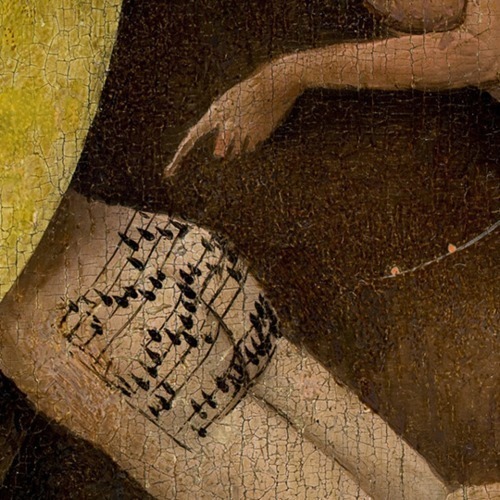It's got the music of the damned tattooed all over it. What sin did this guy commit to get his own cursed song inked into his behind?
Here's a pullback shot of the picture:
And here's the whole triptych by Hieronymus Bosch - "The Garden of Earthly Delights":
Anyhow, some genius student by name of Amelia from Oklahoma Christian University noticed this guy's shame in a painting. After she and a mate had snickered over it a while (embarrassment is part of this guy's penance for his sin. Man, what did he do?) she decided to transcribe it.
I'm liking Amelia. She's a music/arts major with a bit of computer science thrown in. This is exactly the sort of whackadoodle thing I would have done at university.
Apparently I'm not the only one who's intrigued by her music. Will, the wellmanicuredman, was also taken by this cursed little tune and he did a rather lovely arrangement, with lyrics. I can't embed it here, so go listen to it. You'll like it.
I wish I knew the guy's original sin. Must have been a doozy, because here we are, six hundred years later, giving him grief.
__________________________
Her Grace's blog post today is brought to you by a love of music, a strange sense of humour and TASE Day.



1 comment:
I'm not entirely sure, since the original image is rather small, and Amelia admits her version has some transcription errors, but it appears that this hymn is full of tritones. That sort of dissonance had an evil connotation in medieval times and was avoided in sacred music. In later centuries, it acquired the nickname "Devil's Tritone" or "Satan in Music". Although some scholars believe that term had been around for centuries, the earliest documented instance is in 1702. It is possible that Bosch meant this "butt hymn" as a visual pun, showing the infernal uses of the tritone. Musical puns were not unknown at the time. In the 14th century, Guillaume de Machaut composed a song called "My End Is My Beginning" in which the second half of the tune is in retrograde (the first half, played backwards).
Post a Comment